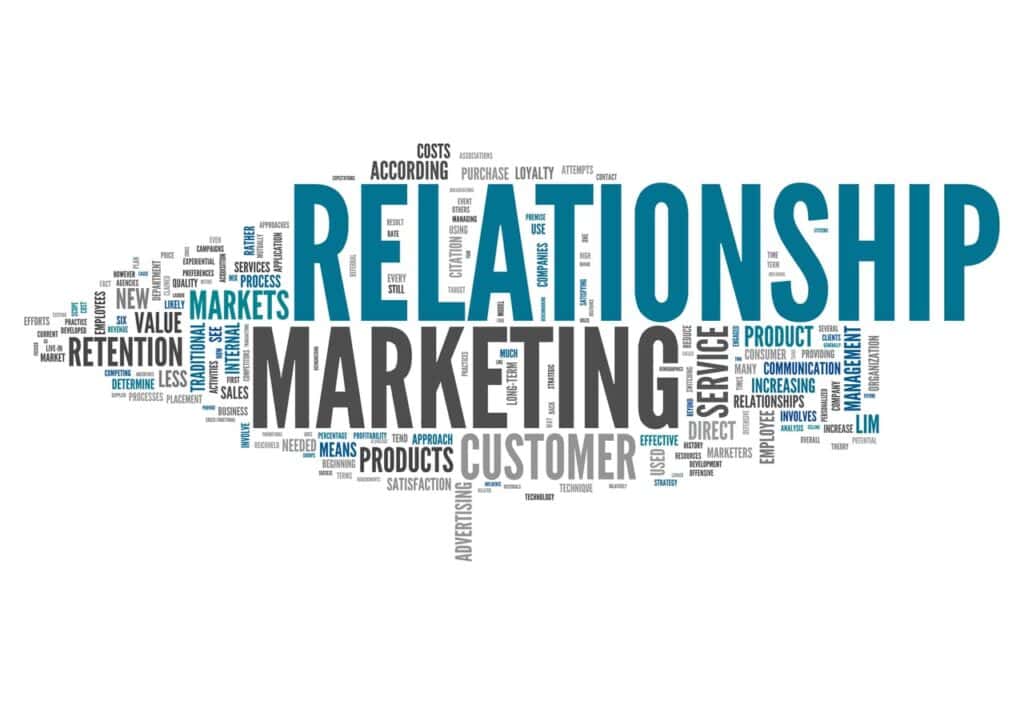Have you ever dreamt of playing a winning game in the complex world of sales? A game where each move is strategic, and each step brings you closer to your business goals? Welcome to the exhilarating arena of field sales.
A realm that harbors immense potential for revenue growth if navigated with astute strategies. The canvas is wide, the possibilities are endless. Are you geared up to embark on this transformative journey?
Field Sales 101
Before we dive deep into the strategies, it’s crucial to first grasp the fundamental essence of field sales. At its core, field sales is the practice of selling products or services directly to customers in their own environment, rather than from within the confines of a company’s premises.
Imagine the days of old when traders would traverse vast distances, laden with goods, to personally reach out to potential customers and strike deals in person.
Modern field sales have evolved tremendously since then, but the principle remains the same. It’s about stepping out of the office, making that personal connection, and closing deals face-to-face.
Venturing into this approach might feel like embarking on a challenging journey, but when approached with the right strategies and tools, the expedition transforms into an exciting adventure.
The potential rewards of this personalized approach, in terms of deep customer relationships and enhanced revenue, make it a pursuit truly worth undertaking.
So, gear up and prepare yourself to conquer the realm of field sales!
- Prospecting: Identifying potential customers who are likely to purchase your product or service.
- Relationship Building: Developing rapport and trust with your prospects.
- Product Knowledge: Thoroughly understand the features, benefits, and applications of your product or service.
- Customer Insight: Recognizing the specific needs, pain points, and preferences of your target customers.
- Presentation Skills: Effectively showcasing your product or service to engage and persuade prospects.
- Handling Objections: Addressing concerns and doubts raised by prospects convincingly and professionally.
- Closing Deals: Finalizing the sale and ensuring customer satisfaction.
- Follow-Up: Maintaining an ongoing relationship with customers for future business and referrals.
- Territory Management: Strategically manage your assigned area to optimize efforts and resources.
- Continuous Learning: Regularly update your sales skills, market knowledge, and product information to stay competitive.
Success in field sales is often reflected in a higher conversion rate, increased customer loyalty, and a significant boost in revenue.
The question is, how can you unlock this success? What are the strategies you need to deploy? Let’s delve in and discover.
1. Understanding Your Target Market
Picture setting sails on a treasure hunt with no map or compass to guide you. Seems quite daunting, doesn’t it? This is exactly what venturing into field sales without a firm grasp of your target market resembles – navigating uncharted waters blindly.
The key to cracking the field sales code lies in a profound understanding of your customer. The ‘customer’ here forms the nucleus of your strategy, the proverbial treasure map guiding your way. Unraveling their needs, preferences, and pain points can help draw a detailed map, leading straight to the treasure chest of sales success.
Without this comprehensive customer understanding, even the most cutting-edge techniques can become akin to a ship adrift at sea.
Here’s what you need to do:
- Thorough Market Research: Understand the needs, preferences, and pain points of your customers.
- Market Segmentation: Not all customers are the same. Segmenting your market allows you to develop targeted approaches for different customer groups.
- Sales Approach Customization: With knowledge of your target market, your sales team can tailor your approach, enhancing the probability of successful conversions.
- Key Decision-Makers: In each target organization or customer segment, it’s crucial to identify the individuals who wield decision-making power. Prioritize establishing a relationship with them.
- Industry Trends: Keep a pulse on the latest trends in your industry. This helps in aligning your strategy with market movements and customer expectations.
- Competitor Analysis: Understand your competition and differentiate your offerings. Highlighting what sets you apart can give you a competitive edge in your field sales strategies.
2. Building Trust and Credibility: Relationship-Based Sales
Think about your personal relationships. Don’t you trust and value the people who understand you and meet your needs? The same applies to your customers. A transaction may begin with a product, but it’s the relationship you build with your customer that will cement the deal.
As the old saying goes, “People buy from people they trust“. Isn’t it time you solidified your relationships with your customers?
In the world of sales, relationships are your gold mines. Foster these relationships and treasure them. Your software can help you keep track of every interaction, ensuring no opportunity for connection is missed.
Benefits of Relationship-Based Sales
- Understand customer pain points: Listen actively and empathetically to truly comprehend your customer’s challenges.
- Offer personalized experiences: Customize your solutions to meet the unique needs of customers, demonstrating your understanding and care.
- Deliver excellent customer service: Consistently aim to exceed your expectations, establishing yourself as a reliable and trustworthy partner.
- Stay transparent and honest: Maintain transparency in your dealings, keeping your promises and managing expectations realistically.
- Follow up proactively: Regular and thoughtful follow-up shows your commitment and interest, reinforcing your relationship.
- Show appreciation: A simple ‘thank you’ can go a long way in making your customers feel valued and respected.
- Provide valuable insights: Be the expert that customers can turn to for advice and knowledge. Providing relevant insights can enhance your credibility and demonstrate your expertise.
- Solve problems swiftly: Show agility in addressing and solving any issues or concerns your customers face. Quick and effective problem-solving can boost customer satisfaction and loyalty.
3. Technology as a Game-Changer: CRM Systems and Sales Tools
Ever dreamt of a magic wand that could declutter your sales maze, converting intricate pathways into a smooth expressway? Well, technology is the modern-day equivalent of that magic wand in the field.
The right blend of sales tools can transform your processes, conserve time, and supercharge efficiency, essentially functioning as an always-on, never-tiring assistant working tirelessly to simplify your tasks.
Beest software, for instance, presents a comprehensive toolkit, meticulously engineered to uplift your field operations. Furnished with features like advanced CRM systems, intuitive mobile apps, and smart automation capabilities, it dons the role of a personal aide, empowering you to:
- Track customer interactions: Understand who, when, and how to engage your customers to create the most effective communication strategy.
- Manage leads and opportunities: Prioritize your prospects based on potential, helping to maximize your chances for successful conversions.
- Gain real-time insights: Make informed decisions powered by accurate, up-to-the-minute information that reflects the current business landscape.
- Automate routine tasks: Let technology take over mundane tasks such as scheduling follow-ups or updating customer records, freeing up your time to focus on strategic tasks.
- Measure performance: Use technology to track key performance metrics, helping you gauge the effectiveness of your strategies and adjust accordingly.
- Enhance collaboration: Leverage technology to promote seamless collaboration among your team members, improving efficiency and alignment.
4. Mastering Sales Presentations and Demonstrations
Picture this: you’re standing in a grand theatre, under the luminescent glow of a spotlight, armed with an opportunity to captivate your audience – your prospective customers.
Your presentations and product demonstrations serve as your act, your grand performance. The mastery of these performances can be the fulcrum tipping the scales between a euphoric standing ovation (a successful sale) and a dishearteningly vacant auditorium (a missed opportunity).
But, how do you ensure that each act you put on is not just a performance, but an encore-worthy masterpiece?
Tips to Deliver a Performance That Reverberates With Your Audience
- Deliver impactful presentations: Craft your presentations to be engaging and memorable, specifically addressing customer needs and showcasing the unique benefits of your product or service.
- Use storytelling techniques: Spin a narrative around your product that resonates on an emotional level with your customers, fostering a deeper connection.
- Use visual aids, testimonials, and case studies: These tools amplify persuasion and engagement, infusing credibility into your pitch and solidifying your proposition.
- Highlight unique selling propositions (USPs): Accentuate the unique aspects of your offering that set you apart from the competition, creating a compelling argument for your product.
- Answer objections proactively: Anticipate and address potential customer objections within your presentation, showing that you understand their concerns and have solutions.
- Invite interaction: Make your presentations interactive by encouraging questions or feedback. This not only engages your audience but also provides valuable insights into their thoughts.
- End with a strong call-to-action (CTA): Summarize key points and end with a clear and persuasive CTA to guide the next steps.
5. Strategic Territory Management
Do you remember the strategic board game Monopoly? Recall the thrill of acquiring prized territories and the satisfaction of burgeoning wealth leading you to triumph? Picture field sales as your real-life Monopoly, where shrewd territory management becomes the key to unlocking a surge in revenue growth.
Think of your territories as your individual ‘properties’ – your regions ripe with potential.
Skillful management of these territories assists you in prioritizing your efforts, maximizing resource utilization, and bolstering your overall performance.
Benefits of Harnessing the Territory Management Capabilities of our Software
- High-Potential Areas: Make the best use of your resources by directing them towards areas with the highest potential for returns.
- Sales Routes Optimization: Trim down travel time and allocate more hours for meaningful customer interactions.
- Data Insights: Harness the power of analytical data to guide your decisions and unearth hidden opportunities.
- Prospects Prioritization: Segregate and prioritize your leads based on their value, ensuring your top prospects receive the attention they deserve.
- Underpenetrated Regions: Pinpoint regions with untapped potential, focusing your efforts on penetrating these markets.
- Changes Adaptation: With real-time data at your disposal, adapt your strategies swiftly in response to changes in the market.
- Workload Balance: Distribute tasks equitably among your sales reps, ensuring a balanced workload while maximizing productivity.
- Sales Forecast: Utilize territory data to project sales trends and numbers with greater accuracy, aiding strategic planning.
6. Continuous Learning: The Key to Staying Ahead
Think of the dynamic and high-octane world of sales as a swift-flowing river; if you aren’t moving forward, you’re inevitably drifting backward. So, what’s the key to outpacing the current and staying ahead of the competition? The answer lies in continuous learning and ceaseless improvement.
Embracing the journey of lifelong learning not only sharpens your existing skillset but also arms you with novel capabilities, ensuring you remain a force to reckon with amidst shifting market trends.
For example, the Beest.app steps into the shoes of a seasoned mentor in this enduring quest for knowledge. Offering regular training modules, interactive workshops, and instant feedback mechanisms, it becomes a pillar of support as you strive to:
- Enhance your sales skills: Embrace the opportunity to acquire new techniques, refine your existing skills, and broaden your sales repertoire, equipping yourself with a diverse set of tools to tackle any challenge.
- Understand market trends: Stay attuned to the ever-evolving industry landscape, keeping a finger on the pulse of market trends, customer preferences, and emerging opportunities. This knowledge empowers you to adapt and align your strategies accordingly.
- Cultivate a growth mindset: Foster a culture that values continuous learning, knowledge sharing, and improvement. Embrace challenges as opportunities for growth, encouraging yourself and your team to embrace new ideas and explore uncharted territories.
- Promote collaboration and knowledge sharing: Encourage open communication and collaboration among your peers and team members. Foster an environment that promotes the exchange of best practices, lessons learned, and innovative ideas, amplifying the collective knowledge base.
- Stay curious and embrace curiosity: Embrace a mindset of curiosity, nurturing an innate desire to explore and discover. Curiosity fuels the quest for knowledge and propels you forward, pushing boundaries and uncovering hidden insights that can give you a competitive edge.
- Embrace emerging technologies: Stay abreast of the latest technological advancements in the field of sales. Explore how emerging technologies, such as artificial intelligence and machine learning, can revolutionize your processes and provide a competitive edge.
- Attend industry events and conferences: Engage in industry-specific events, conferences, and seminars to expand your knowledge, network with industry experts, and gain valuable insights into emerging trends and best practices.
- Read relevant literature and publications: Stay well-read by regularly immersing yourself in sales-related literature, industry publications, and thought leadership articles. This enables you to stay informed, gain fresh perspectives, and deepen your understanding of the field.
10 Types of Technologies You Can Use to Boost Your Field Sales Strategies
In the digital age, technology has become an indispensable asset for field sales teams. With a wide array of tools and software available, harnessing the power of technology can revolutionize your field sales strategies and propel your revenue growth to new heights.
1. Customer Relationship Management (CRM) Systems
CRM systems are the backbone of effective field sales management. These platforms allow you to track customer interactions, manage leads and opportunities, and gain valuable insights into your sales pipeline.
With a CRM system, you can streamline your processes, enhance customer relationships, and drive informed decision-making.
2. Sales Automation Software
Sales automation software such as Beest.app takes care of routine administrative tasks, freeing up your time to focus on high-value activities. It can automate lead management, email campaigns, appointment scheduling, and more, boosting efficiency and productivity.
3. Mobile Apps
Mobile apps provide field sales reps with access to critical information on the go. They enable you to update client data, access product catalogs, generate quotes, and even process orders directly from your mobile device.
With mobile apps, you can stay connected, productive, and responsive while in the field.
4. Data Analytics and Business Intelligence Tools
Data analytics and business intelligence tools allow a sales team to make data-driven decisions by analyzing sales data, identifying trends, and uncovering actionable insights.
By leveraging tools such as Beest.app, you can optimize your strategies, identify growth opportunities, and maximize your revenue potential.
5. Virtual Meeting and Web Conferencing Solutions
Virtual meeting and web conferencing solutions enable you to conduct remote meetings, presentations, and product demonstrations.
These tools eliminate the need for travel, enabling you to engage with clients from anywhere, saving time and costs while maintaining personal connections.
6. Social Selling Platforms
Social selling platforms leverage the power of social media to connect with prospects, build relationships, and generate leads.
By utilizing these platforms, you can tap into vast networks, share valuable content, and engage with your target audience effectively.
7. Geolocation and Mapping Tools
Geolocation and mapping tools like Beest.app help optimize territory management and route planning. By visualizing customer locations, sales reps can efficiently plan their visits, minimize travel time, and maximize face-to-face interactions.
8. E-signature Solutions
E-signature solutions simplify the contract and agreement signing process. With these tools, sales teams can send documents electronically, collect signatures remotely, and expedite the sales cycle, ensuring faster deal closures and smoother transactions.
9. Virtual Reality (VR) and Augmented Reality (AR)
VR and AR technologies offer immersive experiences for product demonstrations and training. They allow clients to visualize products in a virtual environment, making presentations more engaging and impactful.
10. Gamification Platforms
Gamification platforms introduce game elements into sales activities to motivate and incentivize sales reps.
By setting goals, tracking performance, and rewarding achievements, these platforms foster healthy competition and drive sales team engagement and performance.
Incorporating these technologies into your field sales strategies can revolutionize the way you engage with customers, streamline your processes, and ultimately boost your revenue.
Remember, technology is a powerful enabler, but it’s the combination of technological tools and your expertise that drives remarkable results. It’s essential to evaluate your specific needs and select the tools that align with your business objectives and processes.
So, embrace the digital transformation, leverage the advantages of technology, and propel your field strategies to new heights. Stay ahead of the curve, enhance customer experiences, and unlock untapped potential in your pursuit of revenue growth.
The future of field sales is here, and it’s powered by technology.
Final Thoughts | Powerful Boosts at the Tip of Your Hands
In the exhilarating world of field sales, where the pursuit of revenue growth and sales excellence reigns supreme, the key to success lies in the mastery of effective and efficient field sales strategies.
By applying these strategies and embracing the power of our software, you can navigate the challenges of the field sales landscape with finesse, capitalizing on opportunities and unlocking the full potential of your sales team.
Remember, each client interaction is an opportunity to forge a meaningful connection, each presentation a chance to captivate and persuade, and each territory a realm brimming with untapped potential.
So, equip yourself with the knowledge, mindset, and technology to drive revenue growth, exceed targets, and thrive in the ever-evolving field sales arena.
Start with Beest.app – a trusted and reliable field sales management software – and get ready to witness the transformation as your revenue soars and your field sales prowess becomes legendary. The time for action is now.
Frequently Asked Questions
What is field sales?
Field sales refers to selling products or services directly to clients in their own environment rather than in a company’s premises.
How can I succeed in field sales?
Success in field sales comes from understanding your target market, building strong relationships with customers, leveraging technology, delivering effective presentations, managing your territories strategically, and continuously learning and improving.
How can technology help in field sales?
Technology can streamline field sales processes, provide real-time insights, help manage leads and client interactions, and enable data-driven decision-making.
What role does relationship building play in field sales?
Building strong relationships with customers is crucial in field sales as it fosters trust, enhances loyalty, and leads to repeat business.
How can I deliver an effective sales presentation?
An effective sales presentation addresses client needs, showcases product benefits, uses storytelling, and incorporates visual aids and testimonials for enhanced engagement and persuasion.
Why is territory management important in field sales?
Territory management helps to prioritize high-potential areas, optimize resource allocation, and identify growth opportunities, thereby enhancing overall sales performance.
How can continuous learning benefit field sales teams?
Continuous learning helps field sales reps to stay updated with market trends, improve their sales skills, and foster a growth mindset, thereby staying competitive in the evolving market.





